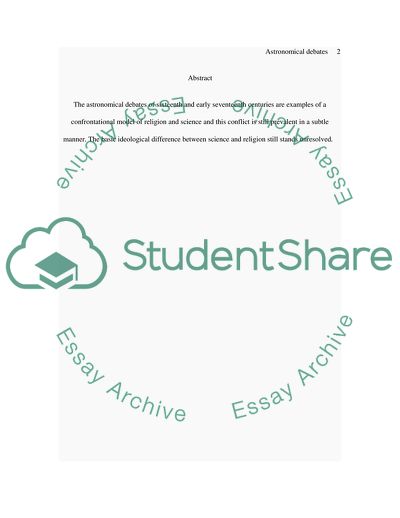Cite this document
(Astronomical Debates of the Sixteenth and Early Seventeenth Centuries Coursework Example | Topics and Well Written Essays - 1750 words, n.d.)
Astronomical Debates of the Sixteenth and Early Seventeenth Centuries Coursework Example | Topics and Well Written Essays - 1750 words. https://studentshare.org/astronomy/1716565-rel-340-science-religion-project-1
Astronomical Debates of the Sixteenth and Early Seventeenth Centuries Coursework Example | Topics and Well Written Essays - 1750 words. https://studentshare.org/astronomy/1716565-rel-340-science-religion-project-1
(Astronomical Debates of the Sixteenth and Early Seventeenth Centuries Coursework Example | Topics and Well Written Essays - 1750 Words)
Astronomical Debates of the Sixteenth and Early Seventeenth Centuries Coursework Example | Topics and Well Written Essays - 1750 Words. https://studentshare.org/astronomy/1716565-rel-340-science-religion-project-1.
Astronomical Debates of the Sixteenth and Early Seventeenth Centuries Coursework Example | Topics and Well Written Essays - 1750 Words. https://studentshare.org/astronomy/1716565-rel-340-science-religion-project-1.
“Astronomical Debates of the Sixteenth and Early Seventeenth Centuries Coursework Example | Topics and Well Written Essays - 1750 Words”. https://studentshare.org/astronomy/1716565-rel-340-science-religion-project-1.


